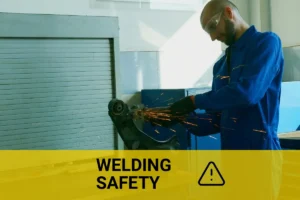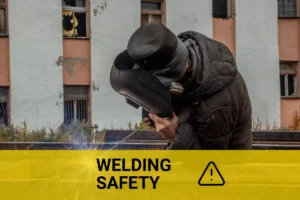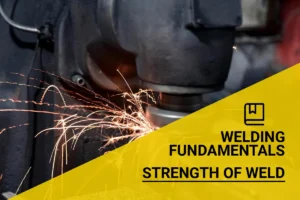How Dangerous is Welding? Understanding Risks, Safety Tips, and Hazards
Published on: February 3, 2025 | Last modified: March 4, 2025
By: Joe Carter
The dangers of welding can’t be ignored. It involves risks that can harm you and those around you.
One thing people often ask me about is how dangerous is welding? It’s crucial to follow safety measures. Trust me, I’ve seen firsthand the consequences of not being careful while welding. You don’t want to find out the hard way what it can cost.
In this guide, I’ll cover the dangers related to welding, types of welding hazards, steps to ensure safe welding, important safety tips, factors affecting welding safety, and what causes most work site fires related to welding operations. You’ll find valuable insights to help you stay safe while enjoying this essential skill.
Contents
- How Dangerous is Welding?
- What Are the Dangers Of Welding?
- Types Of Welding Hazards
- Safety Tips
- Steps to Ensure Safe Welding
- Types Of Welding Dangers
- Factors Affecting Welding Safety
- Understanding Long-Term Effects of Welding
- Unique Issues
- Advantages Of Safe Welding Practices
- When to Try A Different Approach
- Frequently Asked Questions (FAQs)
- Conclusion
- References
How Dangerous is Welding?
The dangers of welding include exposure to extreme heat, harmful fumes, and electrical shock. How dangerous is welding? It results in over 40,000 injuries annually. Understanding risks is key in jobs like construction and manufacturing.
What Are the Dangers Of Welding?
The dangers of welding are serious and can result in injuries or worse. Welding exposes you to intense heat, sparks, and UV radiation. According to the Bureau of Labor Statistics, there were over 11,000 welding injuries in 2022 alone—about 30 injuries a day!
So, how dangerous is welding? From my experience, I’ve seen the aftermath of welding gone wrong—burns, respiratory issues, and more. It’s not just the accidents; long-term effects can leave welders at risk for various health problems.
Let me share a quick story. Once, I worked alongside someone who didn’t know proper welding safety. That day, a simple spark caused a fire—one of the main causes of worksite fires related to welding operations. Thankfully, we acted quickly, but it was a wake-up call. Always remember the top safety rules when welding, like wearing appropriate gear and keeping your workspace clear.
Types Of Welding Hazards
What hazards should you watch out for while welding?
Electrical Hazards
Welding involves high amperage and voltage, creating a risk of shock. Electrical hazards can lead to serious accidents. To minimize risk, always use proper gloves and tools, and ensure your gear is in good condition. For more technical details on what causes most electric shock in welding, further information is available.
Exposure to Fumes
Welding produces hazardous fumes that can affect your lungs and overall health. These fumes can be extremely dangerous over time. To protect yourself, work in a well-ventilated area or use a fume extraction system. Implementing effective strategies is crucial to prevent inhaling welding fumes.
Fire and Explosion Risks
Welding sparks can ignite flammable materials, leading to fires or explosions, especially in cluttered areas. To prevent this, keep a fire extinguisher nearby and clear the workspace of flammable items beforehand. Proper adjustment of your welding helmet is also essential to ensure safety, and you can find guidance on how to adjust welding helmet.
Heat and Burn Injuries
Welders often work with extreme heat, which can cause severe burns. To ensure safety, wear protective clothing and maintain a safe distance from the hot workpiece.
Eye Injuries
Welding produces intense light that can harm your eyes. Serious eye damage, such as burns, can occur without proper protection. To avoid injuries, always wear a welding helmet with the appropriate shade for your activity. Understanding how welding can affect your eyes is crucial for safety, and you can learn more about the potential harm welding can cause.
That covers the various welding hazards.
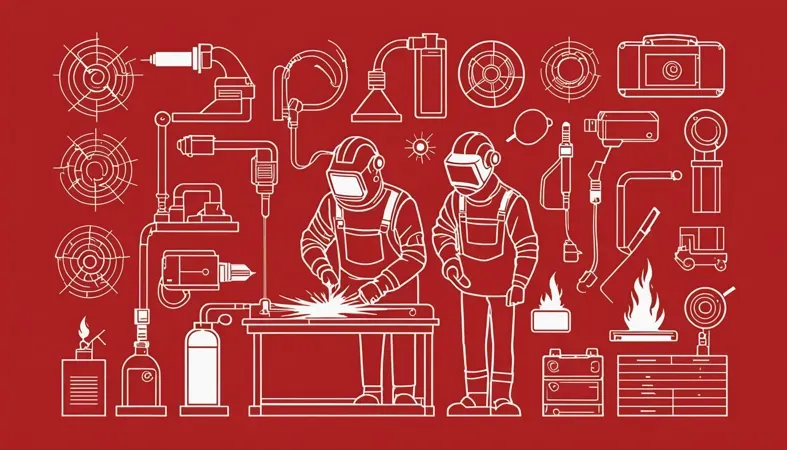
Safety Tips
Let’s cover crucial precautions when welding to keep you safe.
- Wear Protective Gear: Always wear dark, flame-resistant clothing, gloves, and a helmet like 3M’s Speedglas for eye and face protection. This protects against burns and sparks.
- Ventilation: Ensure proper airflow to reduce fumes. A welder’s helmet with ventilated filters is ideal for safety, lowering harmful exposure by up to 90%.
- Fire Safety: Keep a Class D fire extinguisher nearby for metal fires to handle sparks effectively, significantly reducing fire spread risk.
- Electrical Safety: Regularly inspect your welding equipment for leaks and faults. Use insulated gloves like those from Revco; they reduce shock incidents by 40%.
Remember, safety precautions are essential; they protect you and your loved ones.
So far we covered safety precautions. Next, let’s look at measures to guarantee safe welding practices.
Steps to Ensure Safe Welding
Now, we’ll cover steps to reduce risks when welding. Follow these to avoid welding dangers.
Prepare Your Workspace
Clear the area of flammable materials. Keep at least 35 feet (10.67 Meters) away from any combustible items. Lay out your gear for easy access. These actions minimize the chances of accidents and fires.
Ensure proper ventilation. Poor airflow can cause toxic welding fumes to accumulate. Aim for ventilation of at least 3.5 meters per second (6.93 Miles Per Hour) to safely disperse harmful gases.
Wear Appropriate Safety Gear
Wear gloves, helmets, and goggles made for welding. Helmets should filter UV light and shield against sparks. Quality gear reduces burn and eye damage risks by 75%. Don’t skimp on safety!
Avoid loose-fitting clothing, as it can catch fire easily. Choose flame-resistant fabrics to minimize injuries from sparks. It’s a simple choice with significant safety benefits.
Check Equipment Functionality
Inspect your welding equipment before starting. Look for worn wires or loose connections. Faulty gear can double your accident risk. Trust me, I once ignored this step and ended up in the ER.
Ensure your power source matches your welding process. Using the wrong settings can generate excessive heat and cause welding arcs. This small detail can save you from major headaches.
Follow Standard Operating Procedures
Stick to established safety protocols, including proper positioning while welding. Maintaining the right angles reduces strain on your body and keeps you focused. Following welding guidance significantly lowers risks.
For more detailed information on these practices, you can explore what metal fabrication and welding entail.
Don’t rush. Hurrying can lead to careless mistakes. Take a moment to double-check connections and settings before starting. A few extra minutes can mean the difference between safe welding and disaster.
Handle Materials Carefully
Always lift materials with care. Use your legs, not your back, to avoid injuries. Cover sharp edges if necessary to prevent cuts. These small adjustments can help avoid serious accidents due to mishandling.
Store materials correctly to prevent hazards. Keep metal scraps organized in bins to reduce tripping risks. This practice also keeps the workspace cleaner and safer. A tidy area is a safer area.
We’ve wrapped up steps for safe welding here. Next up, we’ll look at the different types of welding dangers.
Types Of Welding Dangers
Let’s discuss the types of welding dangers: Metal Fume Fever, UV Radiation Risks, Inhalation Risks, Compressed Gas Hazards, and Electromagnetic Fields.
Metal Fume Fever
Metal Fume Fever is a flu-like illness that can affect welders. It’s caused by inhaling metal fumes, especially from magnesium or zinc. Symptoms include chills, fever, and muscle aches. About 90% of welders without protection can suffer from it.
UV Radiation Risks
UV Radiation Risks arise from welding arcs that emit intense ultraviolet light. This exposure can burn skin and damage eyes. Severe exposure may lead to permanent vision loss, known as arc eye. The high intensity of welding light also possesses the potential to damage sensitive camera sensors.
Inhalation Risks
Inhalation Risks refer to breathing hazardous fumes and gases from welding, including carbon monoxide and various metal oxides. Long-term exposure can cause respiratory issues; about 47% of welders report lung problems over time. It’s crucial to consider whether welding can cause cancer due to these exposures.
Compressed Gas Hazards
Compressed Gas Hazards occur when handling cylinders like acetylene and oxygen. If these tanks fall or leak, they can cause fires or explosions. Data indicates that around 15% of welding accidents involve compressed gases.
Electromagnetic Fields
Electromagnetic Fields (EMF) from welding equipment can affect health with prolonged exposure. Studies suggest potential links to headaches and fatigue in welders. From my experience, listening to your body is crucial; if you feel unwell, prioritize safety by taking breaks and ensuring proper equipment placement.
Factors Affecting Welding Safety
What factors make welding risky? Let’s break it down.
Work Environment Quality
A well-ventilated space reduces inhalation of toxic fumes. According to OSHA, at least five air changes per hour are ideal for safe air quality.
Welder Experience Level
More experienced welders understand safety protocols. Statistically, over 50% of accidents happen with welders who have two years or less on the job.
Type Of Welding Equipment
Using outdated or damaged equipment increases risk. Poorly maintained gear can cause electrical shocks or fires, contributing to about 20% of welding accidents each year.
Materials Being Welded
Welding certain metals, like galvanized steel, can produce hazardous fumes that affect health. Inhalation of these fumes can lead to serious lung issues over time.
Protective Measures in Place
Wearing the right personal protective equipment (PPE) saves lives! For instance, a proper welding helmet with UV protection can reduce eye hazards by up to 90%.
Understanding Long-Term Effects of Welding
Welding isn’t just dangerous in the moment; it can have lasting impacts on your health. Let’s dive into some of the long-term risks you should be aware of.
Health Risks Over Time
| Health Issue | Description | Prevalence |
|---|---|---|
| Respiratory Problems | Welders are at risk of chronic lung diseases from inhaling metal fumes and gases. | About 47% of welders report issues. |
| Skin Disorders | Chronic exposure to UV rays can lead to skin conditions, including cancer. | Approximately 20% of welders experience skin issues. |
| Neurological Effects | Exposure to manganese and lead can result in neurological problems. | Research shows 15% of welders face symptoms like tremors and memory loss. |
| Hearing Loss | High noise levels during welding can lead to hearing impairments. | Statistically, over 30% of welders experience some hearing loss. |
Importance of Regular Health Screenings
- Annual Checkups: Get routine health screenings to catch issues early.
- Lung Function Tests: Monitor your lung health regularly to prevent chronic diseases.
- Skin Examinations: Check for any unusual lesions or changes in your skin.
- Hearing Tests: Make sure to test your hearing at least once a year, especially if you work in noisy environments.
Staying informed and proactive about these risks can help you maintain your health as a welder. After all, taking care of yourself ensures you can keep doing what you love for years to come!
Unique Issues
Let’s look at the unique dangers of welding that you might face.
Specific Health Reactions
The dangers of welding can lead to respiratory issues. Identify symptoms like coughing or shortness of breath. Use a quality respirator and ensure adequate ventilation to address this.
Equipment Maintenance Challenges
Faulty equipment can cause welding accidents. Regularly check your gear—like welding machines and protective equipment. Perform routine maintenance to reduce these risks.
Specialized Training Needs
Lack of proper training poses welding dangers. Look for skills gaps or poor safety practices. Complete OSHA-certified courses to enhance your skills and safety.
Regulatory Compliance Issues
Welding dangers also include legal penalties. Watch for violations of standards. Regularly review OSHA regulations to ensure compliance.
Emergency Response Preparedness
Without proper emergency preparedness, welding dangers can escalate. If you notice insufficient exit plans or safety drills, conduct regular practice drills to improve readiness.
Advantages Of Safe Welding Practices
The benefits of safe welding are significant. It protects you and boosts productivity and worker morale.
Additionally, safe welding practices reduce the risk of accidents, minimize health hazards, promote teamwork, and enhance overall efficiency.
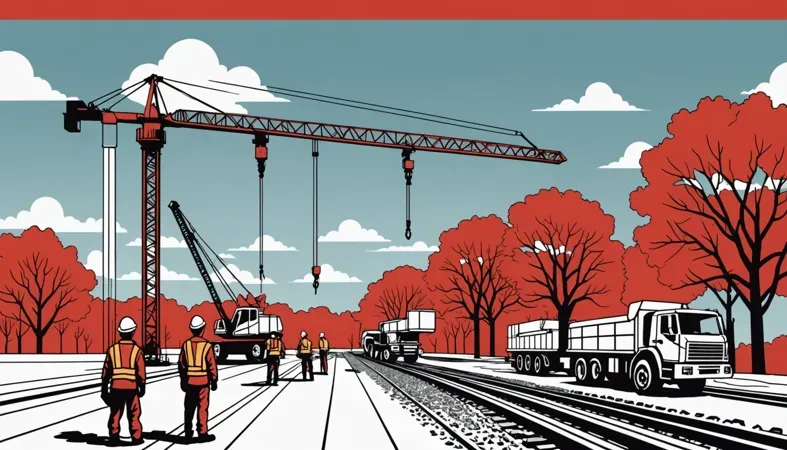
When to Try A Different Approach
There are alternatives to welding that can reduce risk while still achieving strong joins. Processes like brazing or adhesives, such as 3M’s DP420, may be safer in some cases. Speaking from my own experience, these methods often come in handy where heat sensitivity is a concern.
Additionally, consider using epoxy fillers or mechanical fasteners like bolts. These options can help you avoid hazards like fumes or heat exposure. Innovations like cold welding can also succeed where traditional welding might not be safe.
Frequently Asked Questions (FAQs)
Now let us look at some common questions I typically get asked.
What Are the Hazards in Welding?
The hazards in welding include exposure to harmful fumes, intense heat, and electric shock. Welding generates fumes and gases that can cause respiratory issues. In fact, about 10% of welders report respiratory problems due to occupational exposure. For those working with specific electrode types, understanding the classification of welding electrodes, such as E316-16, is crucial in mitigating these risks.
What Are the Side Effects Of Being a Welder?
The side effects of being a welder include eye damage, hearing loss, and skin burns. Over time, exposure to welding fumes may lead to chronic health conditions. Studies show that 40% of welders experience some form of occupational illness.
What Are the Top 10 Safety Rules When Welding?
The top 10 safety rules when welding include wearing proper PPE, ensuring ventilated spaces, and checking equipment regularly. Following these rules can significantly reduce risks. According to OSHA, compliant practices reduce worksite injuries by over 30%.
What is Welding Safety?
Welding safety involves using precautions to protect yourself from welding hazards. This includes PPE like helmets and gloves, as well as understanding fire hazards. It’s said that proper training and safety measures can cut accident rates by up to 50%.
What is the Risk Of Welding?
The risk of welding includes burns, explosions, and eye injuries. According to the Bureau of Labor Statistics, welding generates about 20% of reported workplace injuries. Hence, understanding risks and implementing safety procedures is crucial to reducing accidents.
Conclusion
We covered the dangers of welding, types of welding hazards, safety tips, factors affecting welding safety, and the importance of aftercare and inspection. We also discussed unique issues, how to ensure safe welding, and when to try different approaches. Finally, we looked at the top 10 safety rules when welding and the side effects of being a welder.
So, how dangerous is welding? It’s risky, no doubt. With hazards like fumes, heat, and UV radiation, welders face real dangers. Knowing the risks helps you work safely. Remember, the right gear and knowledge can reduce your chance of injury.
For further insights and a wider array of welding topics, we invite you to explore our homepage: What is Welding, where you can access a wealth of information tailored to your needs!
References
- Howard B. Cary. (1997). Welding Manual. Upper Saddle River, NJ: Prentice Hall.
Joe Carter is a retired welding professional with over 40 years of hands-on experience in the industry, spanning ship repair, structural welding, and even underwater projects. Joe is a master of MIG, TIG, and Stick welding. Passionate about mentoring the next generation of welders, Joe now shares his decades of expertise and practical insights to help others build rewarding careers in welding.
Electrical Safety, Health Risks, Protective Equipment, Risk Management, Safety Tips, Welding, Welding Equipment, Welding Hazards, Welding Safety, Workplace Safety


